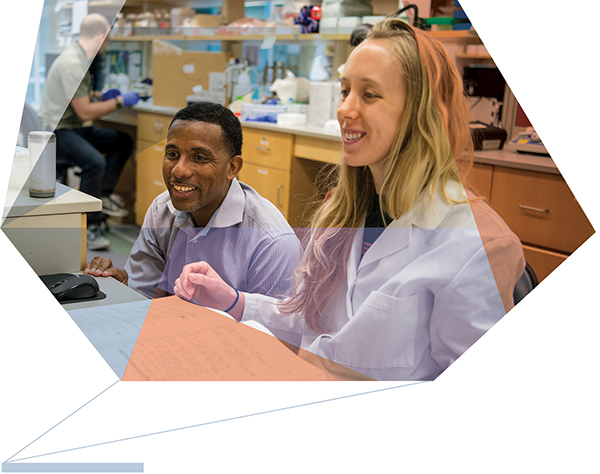
Engineering a new face isn’t like building a bridge or a skyscraper. Cell and tissue engineers work with softer, more dynamic materials in an environment—the human body—that is far more complicated than most building sites.
“Whether you’re a civil engineer or a chemical engineer, there are set rules in those fields,” Grayson says. “You know how fluids flow within pipes. You know how matter responds to forces, and so forth. Right? It’s not the same thing in biology. From person to person, those rules may change. Within the same person in different parts of the body, the same material may respond differently.”
Researchers are approaching the problem of rebuilding facial bone from a number of angles. More than a decade ago, researchers in Germany soaked titanium mesh shaped like a piece of jawbone in stem cells and implanted it in the muscles of a patient’s back to promote the growth of blood vessels.
Several months later, surgeons removed a hybrid metal-tissue replacement jaw and re-implanted it in the patient’s face. The procedure helped the patient eat his first solid meal in nine years. But titanium implants can cause inflammation, don’t develop with the surrounding bone, may require periodic replacement that can cause infections, and leave multiple scars.
With Grayson’s approach, surgeons would scan a patient’s face using CT and transmit the data to tissue engineers. Tissue engineers would use a 3-D printer to produce a porous, biodegradable plastic bone filled with chemical and equipped with physical and chemical signals—such as specific textures, ground-up bone, and tiny beads designed to release precise levels of oxygen—to direct stem cell growth.
Within 12 to 24 hours, Grayson says, this plastic bone would arrive at the operating room in a sterile package. Surgeons would liposuction stem cells from the patient’s own fatty tissues, to avoid rejection, and coat the artificial bone with them to start the process of regeneration.
Gradually, the artificial jawbone would dissolve over six months to a year. “The entire implant degrades and is replaced by native host tissue, and you essentially have a jawbone that’s your jawbone,” says Ethan Nyberg, a PhD candidate in Grayson’s lab.
Persuading stem cells to make the kind of tissue required in just the right shape and at just the right time is tricky. In deciding what kind of tissue to become, stem cells respond to subtle environmental and chemical signals, such as oxygen and calcium levels. Higher oxygen encourages bone growth, while lower oxygen can trigger the development of blood vessels. Both are needed to build a new bone.
There are also regulatory hurdles. So far, the FDA has not approved any stem cell-based products for use, other than blood-forming stem cells harvested from the umbilical cord. But Grayson believes the challenges can be surmounted.
Nyberg sits at a bench papered with sticky notes bearing inspirational messages, including “An idea without execution is a delusion.” He is working on signaling stem cells to create blood vessels. He’s also helping test a new 3-D printer in the lab, which will be used to produce the scaffolds for the implants. A clear plastic box by the printer holds some of the first products: ears made of plastic mesh and a tiny, perfectly formed, red plastic skull.




